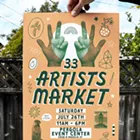Pointless though it may be, the thieving persists for one reason. The martini trade is hot, and Bistango is one of Spokane's most successful suppliers. It's often standing-room-only in the small space, which holds 52, and people aren't above trying to buy their way in. Crow doesn't take payoffs, but his customers sometimes do. "Thursday a guy came in and said, 'I'll pay for your drinks and give you $100 if you give me your seats,'" says Crow, recalling how quickly the propositioned group got up and left.
& lt;span class= "dropcap " & T & lt;/span & he stakes are high for a reason. By 6 pm last Friday, Twigs at River Park Square was packed with people looking to unwind from the week. Nearly every table had at least one of the distinctive glasses. Many had two, three or four. Bartender Ashley Powers estimated that, in the hour she'd been at work, she'd mixed 30 cocktails. The number of martinis? "I'd say 95 percent, easily," she said matter-of-factly.
Of course, selling martinis at a 95 percent clip is easier now that what passes for a martini has opened up wide. Time was, ordering a martini got you gin and dry vermouth served "up" (no ice) in that brazenly feminine glass, garnished with either an olive or a twist of lemon. Now ordering a martini gets you, in the words of Powers, an "uh ... what kind?" Twigs has more than 20 martini variations. Crow says he'll have 60 within the week. Very few contain vermouth, or even gin.
Crow had begun recounting his menu-thievery story just as two women, laden with shopping bags, came in and ordered strawberry lemon drops. His lemon drops are the bar's most popular martini varieties. The sweet tartness of lemon, vodka and caramelized sugar is nowhere near the classic martini's acerbic dryness. They're served without ice, though, and in a martini glass, so something of the original remains.
Though Crow takes those two points as guidelines for calling something a martini, he's more than willing to make exceptions. Certain drinks they've labeled as martinis (their bloody Mary, for example) come on the rocks. Others come in stemless wine glasses. In the age of martini bars, then, the martini itself is less a drink than a malleable and lucrative branding concept.
Profitability isn't a given, though. Drink demand is a fickle thing, and bartenders say they've already caught the minty waft of an alcoholic sea change. The mojito -- a drink made with rum, sugar, mint, limes, club soda and served on the rocks -- is challenging the martini on its own turf. Crow estimates that Bistango's five mojito varieties (one of which, the pomegranate, tastes like minty grape juice) now outsell all their other drinks combined by a margin of "two or three to one."
Powers echoes that sentiment. "Some nights," she says, "every drink is a mojito."
Don't be surprised, then, if an enterprising soul opens up a mojito bar soon, touching off a whole new battle. Be even less surprised if, once the competition for your mojito dollar gets stiff, that same soul offers a mojito made with gin and vermouth, served up and garnished with an olive.














